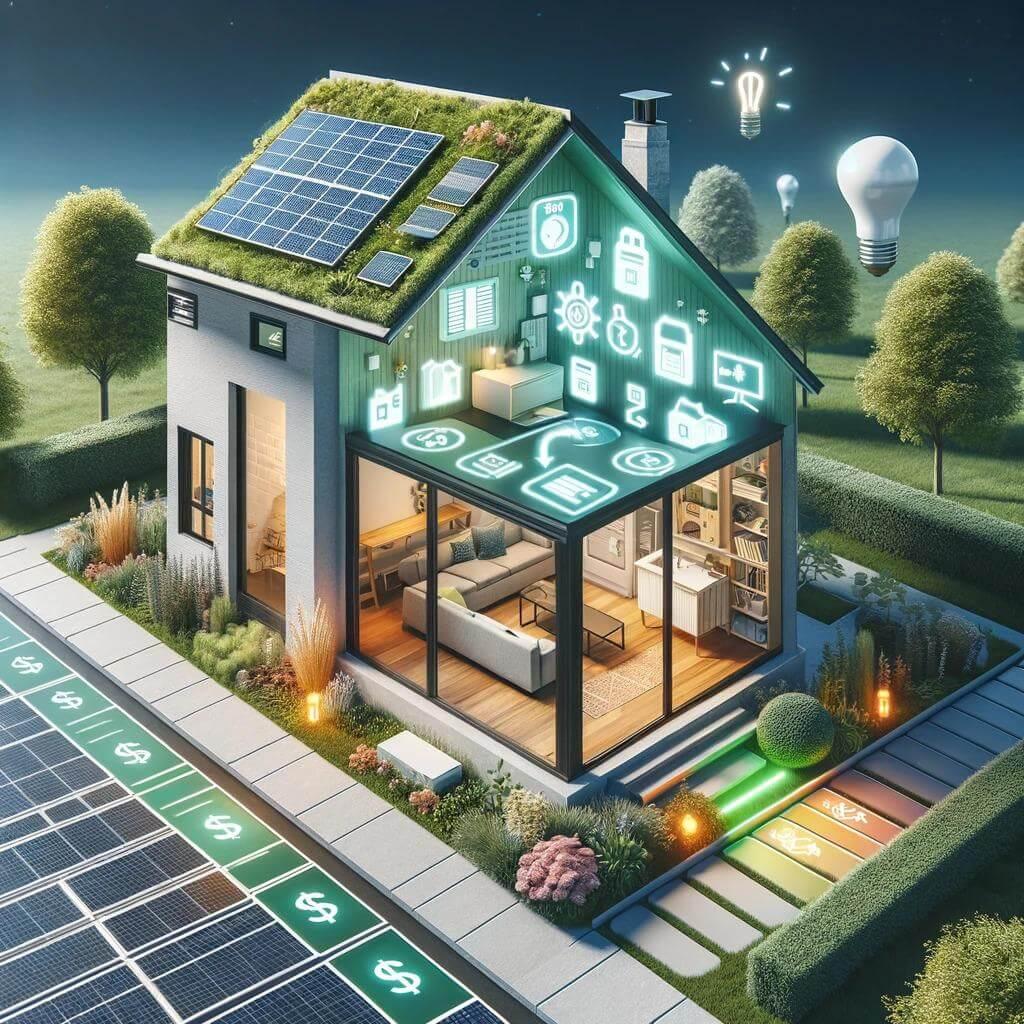FTR Q& A Series: How can my ADU save on energy bills?

INSTANT ADU EVALUATION
Fill out the form below and one of our team members will contact you to help get started.
Welcome to the world of Accessory Dwelling Units (ADUs), where saving on your energy bills isn’t just a possibility—it’s a reality waiting to unfold!
Have you ever wondered how these compact, efficient homes can keep your energy costs low, all while contributing to a greener planet?
Well, you’re in the right place to find out.
With California’s rigorous Title 24 energy standards as a backdrop, ADUs are stepping into the spotlight, showcasing how small spaces can lead to big savings.
But how, you ask?
Through smart design, innovative technology, and a little help from the sun.
Let’s dive into the heart of energy efficiency, where every insulation choice and solar panel makes a difference. Ready to see how your ADU can turn into a powerhouse of savings?
Join us on this journey of discovery, where we’ll unravel the secrets to slashing those bills and enhancing your home’s energy efficiency. This is just the beginning!
Q1: What are the Key Features of an ADU that Help in Saving Energy?
When considering the key features of an ADU that help in saving energy, think about the trifecta of design, insulation, and appliances.
First up, smart design is your best friend.
An ADU designed with energy efficiency in mind makes the most of natural light, reduces heat gain through strategic window placement, and optimizes the layout for airflow.
Next, let’s talk insulation.
Proper insulation keeps your ADU cozy in winter and cool in summer, slashing the need for excessive heating or cooling. Focus on high-quality materials for walls, roofs, and floors.
Energy-saving appliances can significantly reduce your energy consumption. Opt for those with high energy efficiency ratings—think refrigerators, washers, and dryers that do more with less energy.
Together, these elements create an ADU that’s not just a space to live in but a beacon of energy efficiency.
In designing an ADU for energy efficiency, there are three critical areas to focus on:
- Design for Efficiency:
- Orient windows and doors to maximize natural light and minimize heat gain.
- Compact shape to reduce surface area exposed to outdoor temperatures.
- Use landscaping for natural cooling and insulation.
- Insulation:
- High-quality insulation in walls, roofs, and floors to maintain interior temperatures.
- Energy-efficient windows and doors to reduce energy leakage.
- Energy-Saving Appliances:
- Refrigerators: Look for models with the Energy Star label. Brands like LG and Samsung offer high-efficiency units that use innovative cooling technologies to reduce energy consumption.
- Washers and Dryers: Energy Star-certified washers from brands like Whirlpool and Bosch use less water and energy. Pair with an efficient dryer—consider models with moisture sensors to prevent over-drying.
- Dishwashers: Bosch and GE dishwashers have energy-efficient models that save water and energy while still providing superior cleaning.
- Heating and Cooling Systems: Mitsubishi and Daikin offer energy-efficient mini-split systems that can significantly reduce heating and cooling costs.
- Water Heaters: Consider tankless water heaters from brands like Rinnai or EcoSmart, which heat water on demand, reducing energy waste.
Q2: How Can Proper Insulation and Ventilation Systems Impact Energy Efficiency in an ADU?
Good insulation is not just an upgrade; it’s a necessity, especially when your ADU serves as a rental property.
It’s the silent guardian that ensures your energy bills stay low and your tenants stay happy.
Proper insulation keeps the interior temperature comfortable year-round, reducing the need for constant heating or cooling.
This not only saves on energy costs but also extends the lifespan of your HVAC systems by reducing their workload.
Let’s delve into how you can achieve this efficiency.
- Insulate Walls and Roofs: Use high R-value materials from companies like Owens Corning and CertainTeed to minimize heat transfer.
- Seal Windows and Doors: Ensure they’re well-sealed against drafts; consider products from Andersen Windows for energy-efficient options.
- Install Proper Ventilation: Equip your ADU with energy recovery ventilators (ERVs) or heat recovery ventilators (HRVs) from brands like Panasonic or Broan to maintain air quality without losing heat.
Spacing and organization allow for easier understanding and implementation of these energy-saving tactics.
Q3: What Role Does Solar Power Play in Reducing Energy Costs for an ADU?
Moving forward in our journey towards energy-efficient ADUs, let’s explore the transformative power of solar energy. Integrating solar power into your ADU design isn’t just a step towards reducing energy bills; it’s a leap towards sustainability and independence from the grid.
Why Solar Power?
- Cost Savings: Solar panels significantly cut electricity costs over time, offering free energy after initial setup costs.
- Sustainability: By generating clean energy, solar panels reduce the carbon footprint of your ADU.
- Increased Property Value: Homes with solar power systems often enjoy higher resale values.
Key Considerations:
- Site Assessment: Ensure your ADU’s roof has adequate exposure to sunlight.
- System Size: Determine the appropriate system size based on your energy needs and roof space.
- Incentives: Explore local and federal incentives to offset installation costs.
Solar power stands as a beacon of progress in the quest for energy-efficient living.
By embracing solar energy, your ADU can become not only a cozy living space but also a testament to modern, sustainable living practices.
Q4: Are There Smart Technologies That Can Help Monitor and Control Energy Usage in an ADU?
In our final exploration, let’s dive into the smart technologies that revolutionize energy management in ADUs:
- Smart Thermostats: Devices like Google Nest or Ecobee adjust your ADU’s temperature for optimal energy use, learning your habits for smarter heating and cooling.
- LED Smart Bulbs: Brands like Philips Hue offer energy-efficient lighting that can be controlled remotely, reducing unnecessary power consumption.
- Energy Monitors: Sense or Emporia Vue gives real-time insights into your energy usage, pinpointing areas for improvement.
- Smart Plugs: With products from TP-Link or Belkin, turn any appliance into a smart device, scheduling operations for off-peak hours to save on energy bills.
Each of these technologies offers a way to enhance energy efficiency, blending convenience with conservation.
